

Today we’d like to introduce you to Geinene Carson.
Geinene, can you briefly walk us through your story – how you started and how you got to where you are today.
I am a visual artist by profession, a wife and parent of two children; a son, age 11, and daughter, age 8. Though not originally from Atlanta, we have called this city home for many years, over 12 downtown and 2-3 on the south side.
My current body of work originated from my wrestling with the reality of our daughter’s rare genetic disorder, Phelan-McDermid Syndrome also known as 22q13. I was immersed in the daily battle of her condition manifesting in the form of developmental delay, limited mobility, and absence of speech among other things.
I had been an aspiring artist, but when faced with such challenging life circumstances, I fell into a season of grief and depression which greatly affected my art making. I was overwhelmed with this new world involving frequent hospital visits, therapy regimens, medical jargon, research initiatives, and advocacy.
I had seemingly every legit reason why I didn’t have time to make art anymore, yet the tension was growing within me. As an expressionist, creating art is how I process life. I paint not only what I feel, but also what I don’t understand as a way of learning and responding to experiences.
A desire to grasp our daughter’s condition in greater depth led me to study the life of neurons and neurogenesis, the brain’s amazing ability to re-circuit around inflicted damage; and through it, I developed new inspiration as an artist and hope as a parent. I never expected to become so intrigued by the complexity and beauty of the human brain.
Now, I am five years into creating artwork that advocates not only for my daughter but speaks to issues all of us deal with as we navigate a world where suffering, anxiety, depression, and mental health are very tangible matters. We all have parts of our minds untapped and/or in desperate need of restoration, some more visible than others; and, no matter our cognitive abilities, our thoughts and surroundings can influence that process positively or negatively. This reality is what my art speaks to, encouraging all of us to intentionally seek out new ways of thinking and living by learning how to express, own and reclaim our thought life.
Overall, has it been relatively smooth? If not, what were some of the struggles along the way?
The road has not been smooth. I never even had the intention of sharing the initial paintings, of this now developed series, with anyone. They were an extremely personal way of coping and dealing with a new reality.
When conviction trumped the insecurities, I began considering ways to bring my work to the public eye; but, wrestled with how to do this in a way that didn’t exploit our daughter. I started sharing my art in small venues around Atlanta in the hopes of advocating for and building relationships with others on a similar journey. I still fought questions such as if the subject matter was too personal, strange or unrelatable. Exhibiting this work required vulnerability and confidence developed gradually over time. The response was favorable and the opportunities grew as I approached more local establishments. Restaurants, coffee shops, churches, art galleries, pubs, libraries, and business offices opened their doors and offered their walls.
However, neuron art is not exactly in demand, and I often wondered if I was limiting myself by focusing my art-making on such a unique niche. Without previous knowledge of neuroanatomy, most people see my work as abstract, non-representational. And, while I was receiving plenty of positive feedback in person and when sharing on social media, I was unsure how my art was really contributing to a cause and community around me. Who exactly was my art for? To my surprise, the concept seemed to be resonating with many more than I ever imagined. And, the opportunity for influence was growing as more people were intersecting with my art and its message in everyday places.
However, it was when I participated in a specific art and neuroscience exhibition at Georgia State University that an exciting new window of opportunity presented itself. Unlike the many places I had exhibited previously, this audience was well acquainted with my subject matter, understanding it in detail from a scientific standpoint as either a student or teacher of neuroscience. The support and interest shown in my work there, in the form of engaging conversations and an award given to me for ‘Best of Show’, revealed a new appreciation and purpose for my work.
Yet, I couldn’t help but become all too aware of my lacking knowledge in the field of neuroscience. Artistic expression and a compelling personal story could take my art only so far. If I wanted to expand that small niche to engage the scientific community, I needed to do my homework. That is when I decided to take advantage of an online neuroscience course while continuing to create.
I was becoming an advocate in ways I had never imagined which demanded me learning how to better engage a variety of communities. How do I present expressionistic, personal artwork to the scientific community in a way it will accept, and yet also incorporate science into the world of artistic expression? Is it possible for my art to stay relatable to the many but develop in such specific knowledge?
Not only that, but our family had just made a major move from an urban lifestyle downtown to one more rural outside the city where building those connections took even more effort to pursue. I felt my artwork was evolving more in this new setting, with less distraction, more connection to nature and space for my studio to grow. Creating and seeing my work in both an urban setting as well as a more natural one has been significant in its maturation. But, I would be lying if I didn’t say I still struggle with finding enough time to paint and making connections with places to exhibit my art.
Things came to a head earlier this year. Our closets were bursting with paintings, ideas were too numerous to formulate, but opportunities seemed to be drying up. Tension was building, leading me to ask some honest questions of myself and a few respected cohorts. Do I continue? Does this artwork have merit? Is it worth the investment it requires? The few I questioned encouraged me not to quit, claiming I was onto something worthwhile. As a result, our family decided to spend a season making a concerted effort to renovate my studio space. To use a Southern expression, I was either going to “go whole hog or go home”. I was at what I call, a watershed moment in my art career. If I wanted to take my vocation seriously, I needed to press in further and start by taking my workspace up a notch. Since this rededication, if you will, of my creating, I have had unique doors open recently from an interview with an online science and meaning magazine to unexpected recognition of my work by the Netherlands Institute for Neuroscience and the European College of Neuropsychopharmacology Congress in Copenhagen, Denmark.
Please tell us more about your work, what you are currently focused on and most proud of.
I will continue having my sight set on creating more expressionistic, neuron-centric artwork that contributes to and intersects a variety of communities. I believe it is our opportunity as artists to walk these spaces in between groups of people and look for unique ways to create dialogue and engagement between them. It isn’t easy by any means yet work worth doing. At this point, I am becoming known for my subject matter and advocacy. In the realm of rare disease, neuroscience, or mental health, whether the role is professional or personal, it is vital for all involved to be inspired and hopeful in creatively adopting new ways of thinking and living in response. What better way to contribute than by creating images of hope and humanity to inspire a scientist or researcher pursuing a cure, encourage a patient living out the daily reality, express appreciation to the selfless caregivers or ignite the support of generous patrons.
I have begun taking my art from hanging on walls to hanging on trees in the forest near my home. While looking for ways to collaborate and connect with nature, the act also symbolizes how our thoughts and emotions often find their way to the surface unexpectedly, where they are exposed to the light and public display.
I believe art can be a long-lasting symbol of that daily decision to fight the dark corners in our societies and our own minds, bringing our complexities and misfires to the surface, recognizing we all have them and seeing them transform from agents of isolation into honest, beautiful networkings of community and healing.
If you had to go back in time and start over, would you have done anything differently?
If I had to start over, I would have sought help sooner than later when in my season of depression and not left my studio empty for so long. However, with life being what it is at times and circumstances often out of our control, we may not have such choices. In retrospect, I have come to see how that season also played a very important part in what I am doing today, the art I create, and who I have become.
Pricing:
- Original paintings range in price from $300- $1500
- Limited edition giclee prints of most original paintings are available upon request
- Commissions considered
Contact Info:
- Website: www.geinene.com
- Email: geinene@yahoo.com
- Instagram: geinene





Suggest a story: VoyageATL is built on recommendations from the community; it’s how we uncover hidden gems, so if you or someone you know deserves recognition please let us know here.


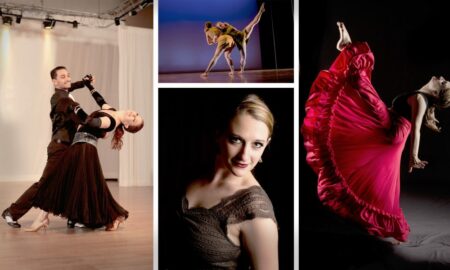









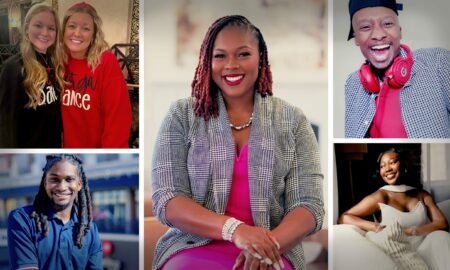
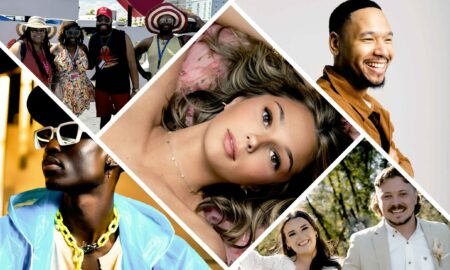

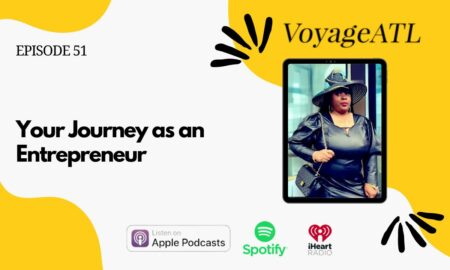
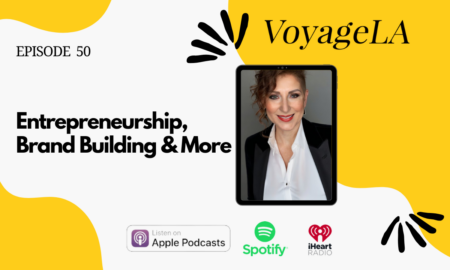
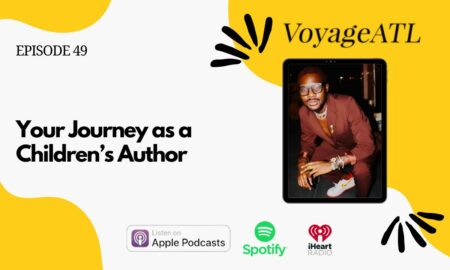
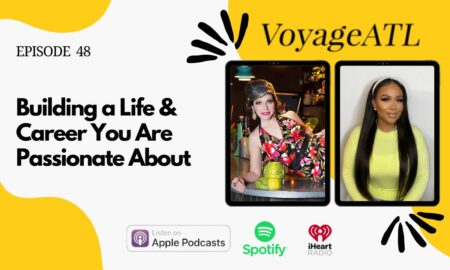
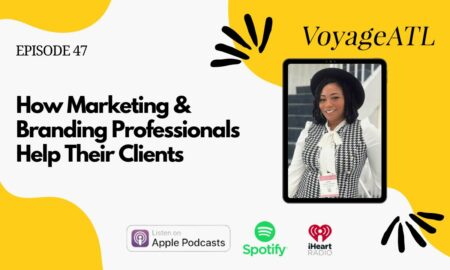
Debs DiGiorgio
September 25, 2019 at 12:48 am
Beautiful and thought-provoking, thank you for sharing and being transparent.
Andrea Haynes
September 28, 2019 at 5:43 pm
How can I receive a copy of this article. This is my sister in law, Geinene Carson.